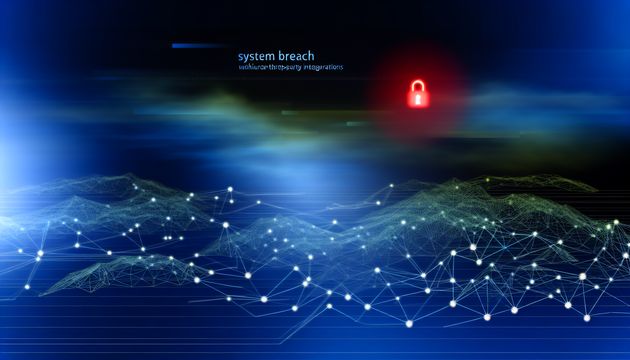
Steam Data Breach Allegations: Unraveling the Twilio Connection
The digital world was recently buzzing with news of a massive data breach involving over 89 million Steam user records, allegedly containing sensitive one-time access codes. The breach was reportedly orchestrated by a hacker known as Machine1337, who put the data up for sale on a hacking forum. This incident has caught significant attention, especially due to the involvement of Twilio, a major player in cloud communications. Twilio has been implicated as a potential source of the leak, although the company has firmly denied any breach of its systems. According to BleepingComputer, Twilio’s spokesperson stated that there is no evidence to suggest their systems were compromised. This situation highlights the complexities of cybersecurity in our interconnected world, where supply-chain vulnerabilities can have far-reaching implications.
Allegations of a Data Breach
Examination of the Alleged Data Leak
In recent reports, a hacker using the alias Machine1337, also known as EnergyWeaponsUser, claimed to have accessed over 89 million Steam user records, including one-time access codes. This claim was made public through a post on a hacking forum, where the actor offered the data for sale at $5,000. Upon investigation, BleepingComputer reviewed a sample of the leaked files, which contained 3,000 records, revealing historic SMS text messages with one-time passcodes for Steam, along with associated phone numbers. However, the origin of this data remains unclear, as BleepingComputer could not ascertain whether the data was sourced from an SMS provider or another intermediary. (BleepingComputer)
Twilio’s Response to Breach Allegations
Twilio, a prominent cloud communications company providing APIs for sending SMS, voice calls, and 2FA messages, has been implicated in the alleged breach. However, Twilio has firmly denied any breach of its systems. A spokesperson for Twilio stated, “There is no evidence to suggest that Twilio was breached. We have reviewed a sampling of the data found online, and see no indication that this data was obtained from Twilio.” The company is actively investigating the situation to determine the source of the data leak. (BleepingComputer)
Potential Supply-Chain Compromise
Independent games journalist MellolwOnline1, founder of the SteamSentinels community group, has suggested that the incident might be a supply-chain compromise involving Twilio. The journalist pointed to technical evidence in the leaked data, indicating real-time SMS log entries from Twilio’s backend systems. This evidence raises the possibility of a compromised admin account or abuse of API keys. While Twilio has acknowledged the situation and is investigating, no definitive conclusions have been reached regarding the source of the breach. (BleepingComputer)
Historical Context of Twilio’s Security Incidents
Twilio has previously faced security challenges, including a confirmed data breach affecting its app Authy, which compromised data associated with 33 million users. This breach was attributed to an unauthenticated endpoint that allowed threat actors to identify data, including phone numbers, associated with Authy accounts. Twilio has since taken measures to secure the endpoint and prevent unauthorized access. Additionally, Twilio has been implicated in other alleged breaches, such as claims of a breach involving its SendGrid platform, although the company has denied these claims, stating that there is no evidence to support them. (SentryBay; CX Today)
Impact on Steam Users and Recommendations
Given the potential exposure of Steam user data, including one-time access codes, users are advised to take precautionary measures to secure their accounts. Steam users are recommended to enable the Steam Guard Mobile Authenticator for additional security and to monitor account activity for unauthorized login attempts. These steps can help mitigate the risk of unauthorized access and protect user accounts from potential exploitation. (BleepingComputer)
Ongoing Investigations and Future Implications
The ongoing investigations by Twilio and other parties involved aim to uncover the source of the data leak and determine whether a breach occurred. As the situation develops, it is crucial for companies relying on third-party communication services to assess their security measures and ensure that their supply chains are secure. The incident highlights the importance of robust security practices and the need for continuous monitoring to prevent unauthorized access to sensitive data. (BleepingComputer)
Conclusion of Existing Content
While the previous sections have addressed various aspects of the alleged data breach, including Twilio’s response, potential supply-chain compromise, historical context, impact on users, and ongoing investigations, it is essential to continue monitoring the situation for new developments. The security landscape is constantly evolving, and organizations must remain vigilant to protect their systems and user data from emerging threats.
Final Thoughts
The allegations against Twilio, despite their firm denial, highlight the intricate challenges of cybersecurity in today’s interconnected digital landscape. As investigations continue, the incident serves as a stark reminder of the importance of robust security measures and vigilant monitoring. Companies must ensure their supply chains are secure to prevent unauthorized access to sensitive data. The ongoing scrutiny of Twilio’s systems and the potential implications for Steam users emphasize the need for continuous vigilance and proactive security strategies. For more details, refer to BleepingComputer.
References
- BleepingComputer. (2025). Twilio denies breach following leak of alleged Steam 2FA codes. https://www.bleepingcomputer.com/news/security/twilio-denies-breach-following-leak-of-alleged-steam-2fa-codes/
- SentryBay. (2024). Twilio confirms data breach affecting 33 million people. https://sentrybay.com/twilio-confirms-data-breach-affecting-33-million-people/
- CX Today. (2024). Twilio disputes reports of a data hack impacting 848,000 of its customers. https://www.cxotoday.com/customer-data-platform/twilio-disputes-reports-of-a-data-hack-impacting-848000-of-its-customers/



